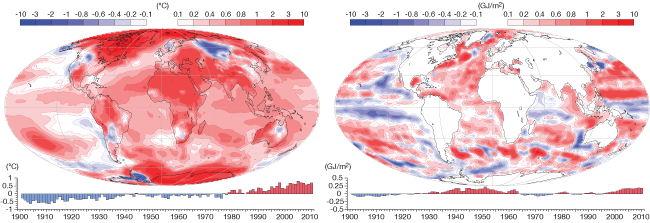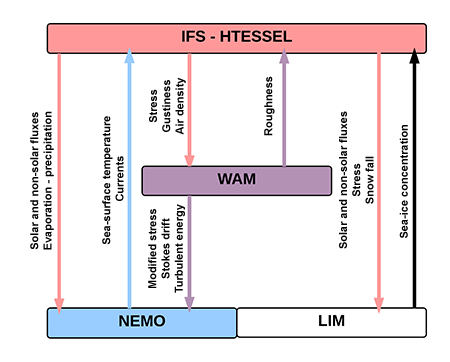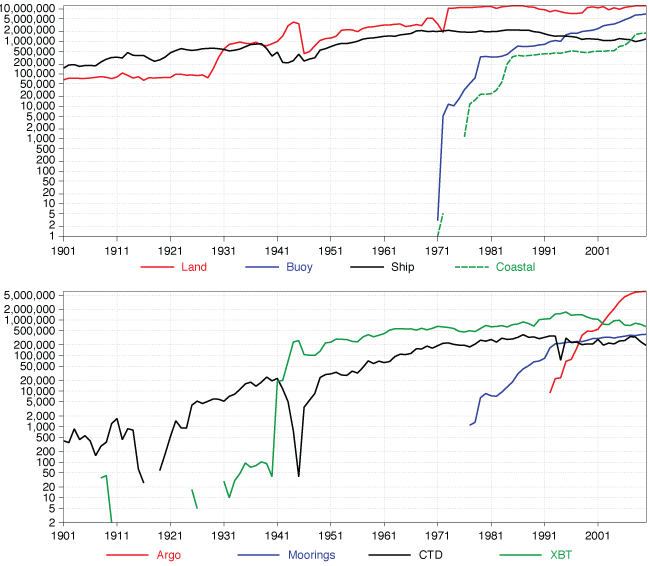

ECMWF has completed a new, innovative reanalysis of the global climate in the 20th century.
Work to produce the CERA-20C reanalysis has been funded by the EU FP7 project ERA-CLIM2.
Scientists will now study the data to see what new insights CERA-20C brings.
Reanalyses provide a comprehensive description of the climate by combining models with observations.
ECMWF has developed a coupled data assimilation system for climate reanalysis (CERA), in which ocean and atmospheric observations are assimilated simultaneously into a coupled atmosphere–ocean model.
“It will be interesting to see how this new way of using observations can contribute to our understanding of the global climate over the last 100 years,” says Patrick Laloyaux, one of the scientists working on the project.
“By analysing the results, we also expect to learn more about how well the coupled data assimilation performed and how it can be improved,” he adds.
One of the features of CERA-20C is the ability to provide information about uncertainties in the reanalysis. This is achieved by producing an ensemble of slightly perturbed reanalyses.

Two-metre temperature anomaly (left) and upper-ocean heat content anomaly (right) in CERA-20C for the year 2010 relative to the period 1961–1990. The two time series show the evolution of yearly global-mean anomalies relative to the same period. The ensemble produced in CERA-20C will be used to estimate uncertainties in the reanalysis.
Earth system modelling
Originally designed for climate reanalysis, CERA could pave the way for more advanced data assimilation in weather forecasting too.
This makes CERA an important part of ECMWF’s Earth system approach to numerical weather prediction, which underpins the Centre’s new ten-year Strategy.
Adopting an Earth system approach means representing the interactions between as many Earth system components as required, at the necessary level of complexity.
In addition to the atmosphere, the land surface and ocean waves, these components also include ocean currents and sea ice.

The coupled Earth system model used at ECMWF is based on advanced modelling techniques to represent relevant interactions between the atmosphere (ECMWF’s Integrated Forecasting System, IFS), the land (HTESSEL model), the ocean (NEMO model), waves (WAM model) and sea ice (LIM model).
This coupled Earth system model is already used operationally at ECMWF to produce ensemble forecasts for the medium, monthly and seasonal range.
However, in CERA-20C it is used for the first time to assimilate observations, producing an ensemble of ten analyses which are consistent with the coupled model.
The fact that CERA-20C includes a ten-member ensemble means that users can estimate not only climate trends but also analysis uncertainties for the entire 20th century.
Big data
Producing CERA-20C posed significant logistical as well as scientific challenges.
Data were generated by running 14 streams in parallel, each with ten coupled, variational assimilations covering a ten-year period, thus allowing a two-year overlap with two consecutive streams.
This implied the completion of about 500,000 data assimilation cycles.
Hundreds of millions of observations of surface pressure, marine wind, ocean temperature and ocean salinity had to be assimilated into the CERA system.
The observing system evolved a lot during the 20th century. Initially concentrated in the northern hemisphere, global coverage has increased tremendously over time.
For example, since the 1990s thousands of free-floating instruments have been deployed across the world’s oceans to provide measurements to a depth of 2,000 metres. These Argo-type floats complement ship-launched conductivity, temperature and depth sensors (CTDs) and expendable bathythermographs (XBTs) as well as moorings.

Yearly count of mean sea level pressure observations (top) and ocean temperature observations (bottom) assimilated in the CERA system for different types of platform. Note that a logarithmic scale has been used.
Using these observations as input, it took seven months to produce the reanalysis dataset using 20,000 of the compute cores of ECMWF’s high-performance computing facility.
ECMWF’s archiving system was used to store the 1,400 terabytes of atmospheric data and 200 terabytes of ocean data produced.
A joint effort
Significant collaboration between meteorological organisations, satellite agencies and universities was required to recover and prepare the observations, which include records from the pre-satellite era.
Work in this area started originally with ESA funds, which led to the development of the first version of the CERA data assimilation system.
Since January 2014, the CERA-20C work has been funded by ERA-CLIM2, an ECMWF-coordinated European Union 7th Framework Programme project which will end in December 2017.
The project brings together 16 European organisations and involves more than 40 scientists.
